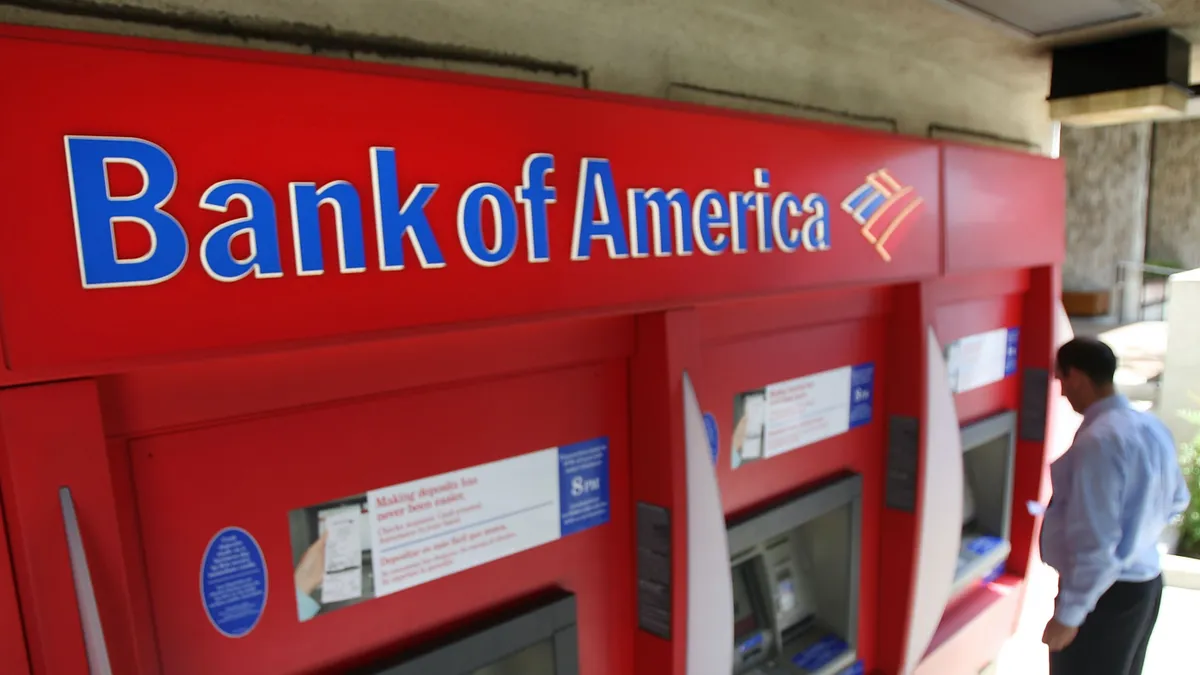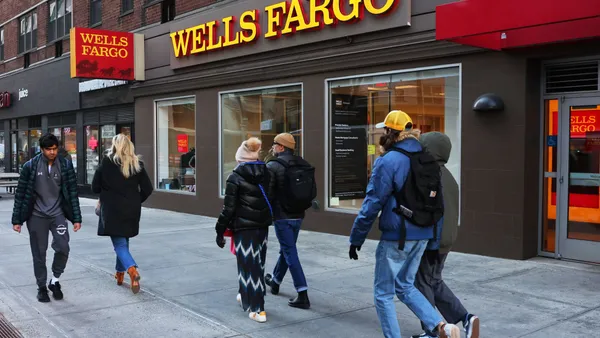Resentment is bubbling at Bank of America over a proposed change in the institution's bonus structure, Bloomberg reported Saturday.
The bank walked back a move to institute "cliff vesting" on company stock it gave to investment bankers and traders who earned $1 million or more as part of a 2020 compensation package, the wire service reported, citing anonymous sources. The provision would have forced those employees to stay at the bank through 2024 to get their 2020 bonuses.
The policy change "didn't work the way some people wanted it to, so we fixed it," Bank of America CEO Brian Moynihan told Bloomberg in a TV interview late last month.
However, those vesting restrictions reportedly remain in effect for corporate and commercial banking employees, who are part of the same division as investment bankers.
And they don't apply to the bank's so-called "rule of 60." Bank of America had let staff retire with all deferred pay if their age and a minimum of 10 years at the company equaled 60.
Several Wall Street banks are hanging on to a greater share of their windfalls this year. Employees at JPMorgan Chase's investment bank, on average, are seeing a 1% raise despite a 22% jump in revenue per employee. For Goldman Sachs, those numbers, respectively, are 2% and 15%. As recently as December, those banks had discussed boosting their bonus pool for sales and trading by as much as 20%, even though they saw revenue increases of 48% and 49%, respectively.
Bank of America, by comparison, planned to keep its bonus pool level with last year's, despite a 20% boost in revenue at the bank during the first nine months of 2020.
"You've got to pay for performance, and the shareholder has to benefit, too," Moynihan told Bloomberg TV in January.
And the bank's net income applicable to common shareholders saw a 36.6% decline in 2020, compared to the previous year, as the bank tripled its loan-loss provisions.
Still, the bank is working with $10 billion to $11 billion for 2020 incentive compensation, according to Bloomberg. And here's where the math might benefit from another perspective.
Bonus pools for banks in the U.K. are far less than their stateside counterparts, Sky News reported Saturday. NatWest is reducing its allotment for staff bonuses by about one-third — to £200 million ($273.9 million). NatWest's total income for 2020 is estimated to be £10.8 billion ($14.8 billion). Bank of America's total 2020 income, by comparison, is $85.5 billion — 5.8 times more.
If Bank of America were working with the same proportional allotment for bonuses as NatWest, its bonus pool would be $1.6 billion. The low end of Bank of America's 2020 pool is 6.25 times that amount.
NatWest is hardly an outlier. Lloyds is reportedly scrapping bonuses altogether. HSBC's bonus pool is allegedly substantially lower for 2020 than it was in 2019.
And the dissonant math extends to top executives from one side of the Atlantic to the other. Barclays, for example, plans to award CEO Jes Staley a bonus that could top out at £800,000 ($1.1 million). By comparison, JPMorgan Chase CEO Jamie Dimon's bonus for 2020 is $5 million. Goldman Sachs CEO David Solomon's is $4.65 million. Wells Fargo's Charlie Scharf is pulling in $4.4 million in bonus cash. And Morgan Stanley's James Gorman is receiving more than $7.8 million.
Bank of America has yet to report Moynihan's compensation figures for 2020. Many of the bank's executives would have faced pay cuts, Bloomberg's sources said, were it not for reduced payouts and the controversial new vesting structure.
One could guess the gripes over bonuses at the U.S.'s second-largest bank — including the dissimilar treatment among corporate and commercial bankers and their investment-banking cohorts — would only get louder once Bank of America assigns a value to its figurehead.












